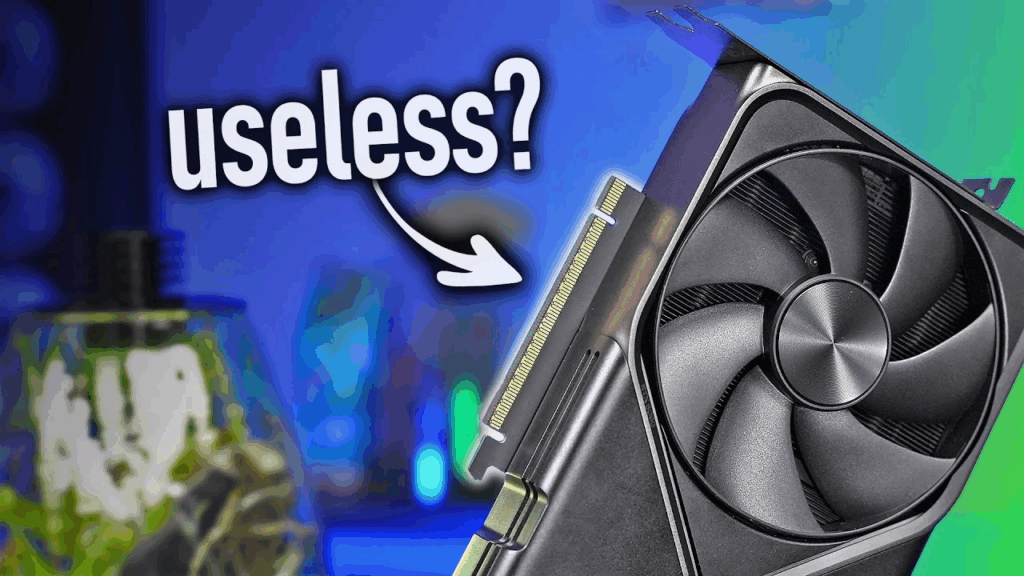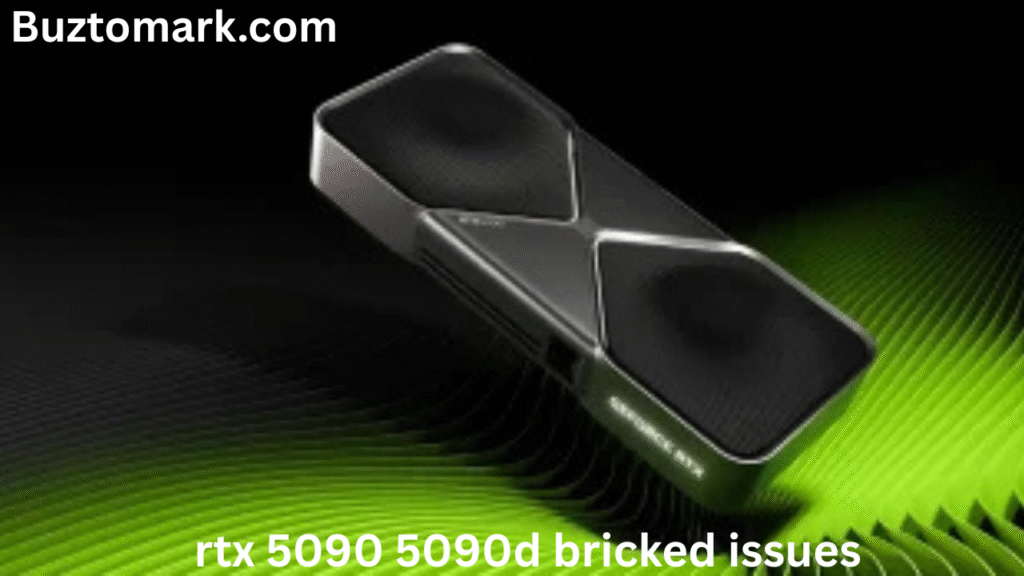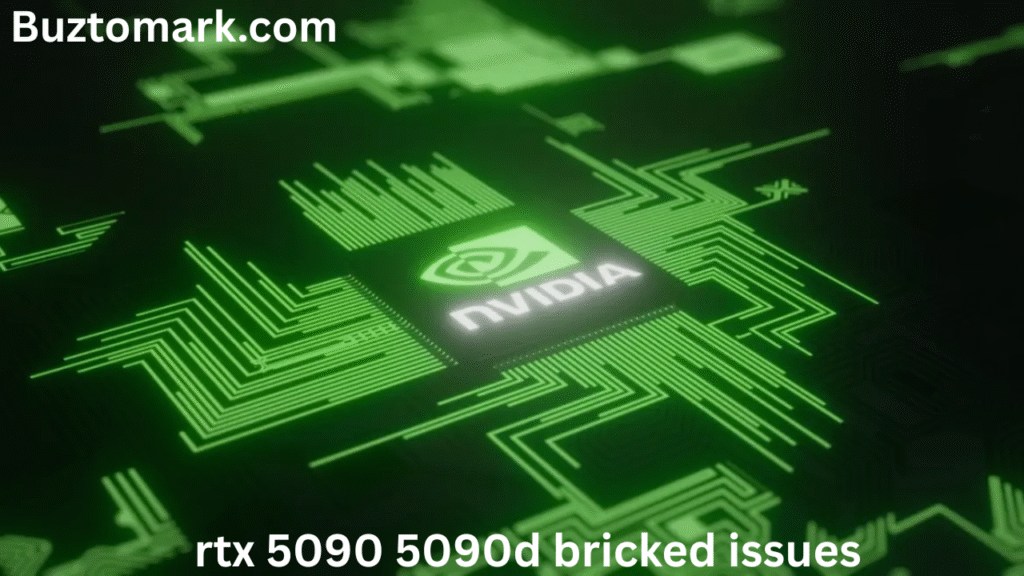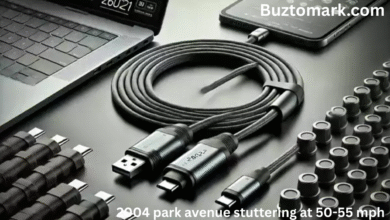RTX 5090 5090D Bricked Issues?? Understanding the Problems Behind RTX 5090 5090D Bricked Issues

The latest GPU launch from NVIDIA has not been without controversy. Among the most alarming concerns circulating in tech forums and hardware communities is the growing issue of “RTX 5090 5090D bricked issues“. Users report sudden failures, black screens, and unresponsive GPUs—what enthusiasts commonly refer to as “bricking.” These RTX 5090 5090D bricked issues have raised eyebrows globally and triggered debates about manufacturing quality, firmware, overheating, and third-party assembly problems. But what’s really causing these bricking scenarios?
Let’s dive deep into the RTX 5090 5090D bricked issues—what they are, why they’re happening, and what it means for consumers and the GPU industry.
Understanding Bricking: What It Means for RTX 5090 5090D Owners

The term “bricked” refers to any electronic device rendered non-functional, essentially turning it into a very expensive paperweight. When applied to GPUs like the RTX 5090 and RTX 5090D, it usually means the card is no longer recognized by the system, can’t boot up, or won’t display output despite power being supplied.
Users encountering RTX 5090 5090D bricked issues have reported that the GPU fails after only a few days or weeks of regular use. Symptoms often begin with screen flickering, overheating, crashing under load, and eventually, total failure. Attempts to reboot the system or reflash the firmware often yield no improvement.
Major Causes Behind RTX 5090 5090D Bricked Issues??

Power Delivery Failures
Early teardown reports suggest the RTX 5090 and 5090D have a complex and aggressive power delivery system. When paired with lower-quality or underpowered PSUs, voltage surges or inconsistent power draw may cause damage to the GPU’s core components. Power instability is a leading suspect in many RTX 5090 5090D bricked issues.
Overclocking Instabilities
Some users eager to push their new cards to the limit may have overclocked them without fully understanding the thermal limitations. Improper voltage tuning and excessive core clocks can quickly lead to bricking, especially with an architecture as dense as the RTX 5090 series.
Firmware or BIOS Corruption
Firmware corruption during driver updates or system crashes has also been blamed for RTX 5090 5090D bricked issues. Some owners experienced their cards bricking right after a GPU driver update or while performing BIOS tweaks. Since the cards may not support dual BIOS fallback in all versions, recovery becomes impossible in many cases.
Poor Thermal Contact or Manufacturing Defects
Several cases of RTX 5090 5090D bricked issues have involved bad solder joints, poorly applied thermal pads, or gaps in contact between the GPU die and heatsink. These factory-level defects are harder to diagnose until the card fails entirely.
Are the RTX 5090 or 5090D More Affected?

While both models are affected by RTX 5090 5090D bricked issues, the RTX 5090D appears to be slightly more vulnerable based on community reports. This could be due to differences in board layout or cooling solutions, especially among third-party AIB (add-in board) partners.
The RTX 5090D, rumored to be a slightly detuned or dual-fan compact version of the 5090, often suffers from constrained cooling potential. If the GPU isn’t dissipating heat efficiently, thermal runaway can cause permanent damage, leading to more frequent RTX 5090 5090D bricked issues among those units.
The Role of AIB Manufacturers in RTX 5090 5090D Bricked Issues
Third-party GPU manufacturers play a big role in how the final product performs. While NVIDIA provides the chip and reference design, partners like MSI, ASUS, and Gigabyte customize cooling, VRM layouts, and even firmware. This variation can lead to uneven quality control, especially during the first wave of a new GPU’s release.
Some tech insiders believe that several AIB partners rushed to release the RTX 5090 and 5090D, which might have led to corner-cutting during assembly. These hastily released cards are showing higher rates of RTX 5090 5090D bricked issues compared to Founders Edition models.
Community Response to RTX 5090 5090D Bricked Issues
The community has not stayed silent. Forums like Reddit, Overclock.net, and GPU-centric Discord groups are flooded with discussions, photos, and diagnostics related to RTX 5090 5090D bricked issues. Some users are even organizing unofficial databases to track faulty serial numbers, card revisions, and symptoms.
In many cases, users with bricked cards have no option but to RMA the product—often waiting weeks for a replacement due to stock shortages. Others have taken a DIY approach, trying to reflash their cards or perform micro-soldering repairs, with mixed results.
Temporary Solutions and Prevention Tips
While a permanent solution must come from NVIDIA and its partners, users can take precautionary measures to avoid falling victim to RTX 5090 5090D bricked issues:
- Use a high-quality power supply with proper wattage (at least 1000W with 80+ Gold certification).
- Avoid aggressive overclocking unless guided by stable, verified profiles.
- Monitor GPU temperatures and voltage draw using tools like HWMonitor or GPU-Z.
- Update drivers cautiously, and avoid beta releases if stability is a concern.
- Ensure case airflow and proper thermal paste application if repasting or modifying the cooler.
These small precautions might help users extend the life of their cards and avoid RTX 5090 5090D bricked issues.
Manufacturer Responsibility: Will NVIDIA Address RTX 5090 5090D Bricked Issues?
With growing complaints about RTX 5090 5090D bricked issues, all eyes are on NVIDIA and its AIB partners to address the problem transparently. So far, no official recall or mass acknowledgment has been issued. However, users who report bricked cards are mostly being approved for RMA if within warranty.
Still, enthusiasts argue that this is not enough. A clearer response about whether the RTX 5090 5090D bricked issues are due to design flaws or third-party missteps could restore confidence in the product.
Long-Term Implications for the GPU Market
The occurrence of RTX 5090 5090D bricked issues might have deeper implications for the entire GPU market. First, it raises concerns about the risks of pushing performance boundaries without thoroughly stress-testing long-term reliability. Second, it could lead to delays in future GPU launches or stricter quality control regulations.
Consumers now demand not just performance, but also durability. If RTX 5090 5090D bricked issues continue to rise, NVIDIA could face reputational damage, forcing it to reevaluate its strategy for high-end enthusiast cards.
Final Thoughts on RTX 5090 5090D Bricked Issues??
The RTX 5090 5090D bricked issues are more than isolated cases—they reflect the risks of bleeding-edge technology rushed to market. Whether due to power delivery problems, overheating, BIOS failures, or factory-level defects, the situation is serious enough to warrant industry-wide attention.
While some users may never encounter problems, those who have experienced bricking are calling for better transparency, faster replacements, and deeper investigations. Until then, the safest bet for RTX 5090 and 5090D owners is to tread carefully, monitor hardware health, and stay informed.
FAQs About RTX 5090 5090D Bricked Issues
1. What does “bricked” mean in the context of RTX 5090 5090D GPUs?
Bricked means the GPU has become non-functional—unable to boot or be recognized by the system, often due to firmware, overheating, or hardware failure.
2. Is the RTX 5090D more prone to bricking than the standard RTX 5090?
Current user reports suggest the RTX 5090D experiences more frequent bricked issues, possibly due to weaker cooling designs and compact layouts.
3. Can bricked RTX 5090 or 5090D GPUs be repaired?
In rare cases, reflashing firmware may help, but most bricked GPUs require RMA or professional repair.
4. Are all RTX 5090 5090D models affected by these issues?
Not all units are affected. However, early batches and certain AIB versions show a higher rate of bricking.
5. How can I avoid RTX 5090 5090D bricked issues?
Use a high-quality PSU, avoid aggressive overclocking, monitor GPU health, and install stable driver versions only.
Read More: Revolutionizing Digital Experiences: Mobile App Development Company Garage2Global Leading the Future




